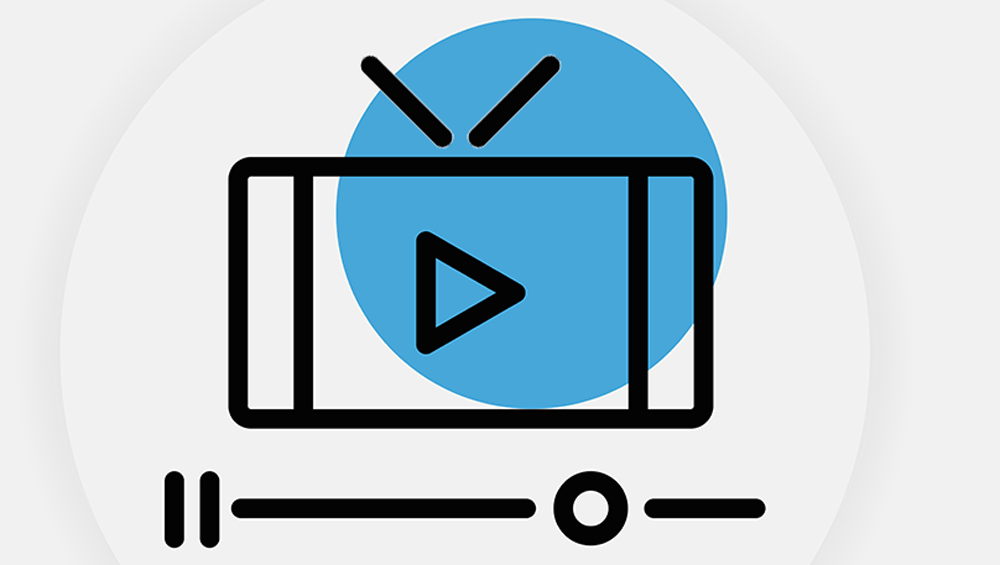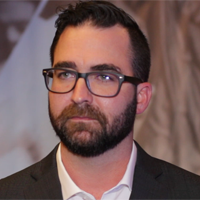
Navigating The Wild West Of OTT Measurement

 NEW YORK — The lack of a standardized way to measure OTT ad impressions and viewing was a common theme throughout TVNewsCheck’s OTT News Summit at the Microsoft Conference Center in New York June 11. Another major challenge discussed by panelists was ad repetition.
NEW YORK — The lack of a standardized way to measure OTT ad impressions and viewing was a common theme throughout TVNewsCheck’s OTT News Summit at the Microsoft Conference Center in New York June 11. Another major challenge discussed by panelists was ad repetition.
“You’re looking at an ecosystem now that looks like cable did 30 years ago… with no standards, no regulation and there’s no real consensus [in the] industry on where we need to be going,” according to Blake Sabatinelli, CEO of the E.W. Scripps Co.-owned Newsy news network.

Scripps’ Blake Sabatinelli
When it comes to who’s measuring OTT data, there’s just a small number of major players now — and they’re “not in the business of making you any happier — they’re in the business of making themselves happier,” he noted during the panel session “Taming the OTT Ad Stack.”
That’s “a tough position for a publisher to be in because we’re trying to play by a multitude of rule books,” he pointed out, referring to broadcasters like Newsy that operate in the OTT space as publishers.
Newsy’s OTT strategy, like many of the broadcasters represented at the Summit, includes a presence on multiple platforms. In Newsy’s case, that has included Channel Master, fuboTV and Watchable, Comcast’s cross-platform video service.
Asked if the delivery of ads on OTT platforms is as seamless an experience as it is with regular broadcast transmissions, Brian Hunt, Sinclair Digital Group head of OTT and CTV advertising sales, gave a quick response: “No.”

Sinclair’s Brian Hunt
After all, he told attendees, OTT and traditional broadcast are quite different. He explained that when you’re broadcasting and running one commercial and one program, it “could reach 20 people in the middle of the night or, on Super Bowl Sunday, it could reach millions.” And the currency for that is largely Nielsen ratings that base its data on estimates of how many people watched a program, Hunt said.
However, on the connected TV and OTT side, it’s a far different situation, with delivery done on a one-to-one basis that’s “repeated over and over and over again to achieve however many ad impressions you have,” he said.
Instead of Nielsen, the currency for OTT is cost-per-thousand ad impressions (CPM), and the measurement companies for OTT are many and it’s technically complicated, he noted.
In Sinclair’s case, it has multiple assets that include the Tennis Channel; the NewsON news app that includes local news broadcasts and clips from more than 200 local U.S. TV stations (which just launched on Amazon Fire Monday, June 10); and the free, ad-supported STIRR, its 32-channel live and on-demand video service that it launched early this year combining local and national sources, he pointed out.
Sinclair also has an aggregated service, CompulseOTT, which feature some of its own product plus content it buys from others, he said, noting that his company uses the new Comscore Campaign Ratings (CCR) platform for most of its reporting, in part because it provides live, daily data.

Hearst’s Adam Noble
“One of the big things to take away from where we are with the OTT space today is that if you think about the fragmentation” — between the many players that are in the space and the many places that content comes from in that space — the difference between OTT and the traditional broadcast space is that, in the traditional ecosystem, all the players have agreed to play by Interactive Advertising Bureau (IAB) rules, Adam Noble, Hearst Television head of ad products and partnerships, pointed out.
There are standards in place for most digital industries, but when “you go into the OTT space, none of that applies,” he noted.
Not only are we dealing with a different set of standards in how advertisers are looking at the OTT sector, “but fundamentally speaking, how you deliver — how you even gain access to” — ad inventory is different, he said, adding: “You have to have certain trust in systems. You have to understand how an ad actually meets the consumer, and those systems vary from publisher to publisher. They vary from tech platform to tech platform. The lack of standards, the lack of consistency in the [OTT] industry [means that], even if you win a bid” on a demand-side platform (DSP), it “doesn’t really mean a hell of a lot.”
So, what needs to happen? Quite simply, publishers must come together and agree on one standard, according to Newsy’s Sabatinelli.
Another major issue is that OTT means something different to each advertiser, he said, explaining that for some of them, OTT means any content delivered via the Internet, regardless of the device being used. That’s 52% of the ad industry, he calculated. But 48%, on the other hand, say it’s connected TV, so “there’s no consensus anywhere on any given part of what the industry is right now, and that’s been problematic for us as publishers,” he said.
There are a couple of things that must happen to address the issue, Hearst’s Noble said, noting that strides are being made to some degree. “We’re in the thick of, I think, figuring those things out now, which is a huge step forward,” he said.
But, he added, there’s another fundamental issue involved. High-quality content is being offered to consumers and broadcasters have largely been thinking about OTT only within the context of the user, he said. That means basically: “Connect to the Internet. Access a library of content and an operating system. You can watch anywhere. Voila. You have OTT.”
But, from an advertiser’s perspective, “I can stream a three-minute cat video through Roku,” he said. So, the question becomes, “just because it went through [the] Roku platform and ended up as a connected TV piece of content, is it now five to 10 times more valuable than it would be if I watched with my mobile phone?” Although, “right now, the economics say yes, common sense says you’re crazy,” he said.
Defining the content that is being monetized, ranking that and defining how publishers are monetizing the ad inventory is step one, he said, adding that the next step is standardizing the process.

Tribune’s Kerry Oslund
“We’re trying to harmonize all of this data that’s coming from different platforms,” Kerry Oslund, VP of strategy and business development at Tribune Broadcasting, said during a panel session earlier in the day.
Google provides that data one way, while CBS All Access gives it to you another way, and DirecTV Now provides it yet another way, and they all call it different things, such as a stream or a view, he said.
“We’re so early in the game that if we just get three of those players together and just agree on 10 or 12 basic metrics that we all use — call them the same things, have the same definitions — we’re going to be a lot better off than if we try to unwind all of this five years from now,” Oslund told the Summit.
His message to the audience: Ask OTT providers what they’re doing with standards and, if they’re doing nothing, ask them to start doing something already.
On the ad repetition front, Sabatinelli pointed out that 95% of Newsy’s online ad transactions happen in a programmatic fashion that’s automated, which he called “both a blessing and a curse.”
It’s “always a challenge to fill 8, 10, 12 different spots at a time — and then when you do it, because you have so many people coming in and bidding, you find a lot of repetition,” he said, calling ad repetition “probably one of the biggest issues that faces OTT right now” — one that Roku has been trying to address.
Subaru, for example, may buy ads through multiple TV station groups and through the open market and the end result is the viewer may get stuck seeing six Subaru ads in a row while watching OTT content, he explained, noting that’s not a pleasant experience.
You can find TVNewsCheck’s exclusive coverage of the summit here and listen to audio files of all the sessions here.
































Comments (0)